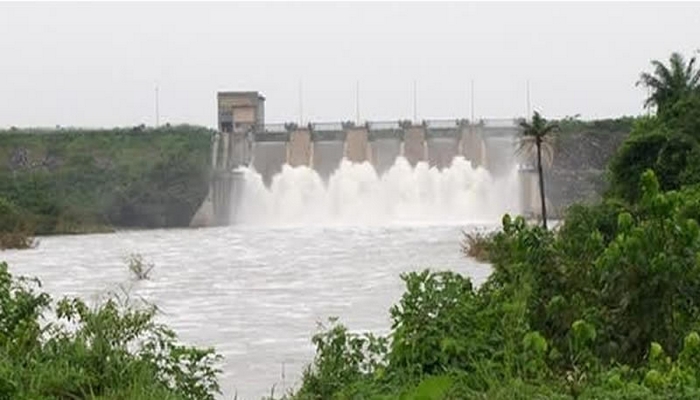
The Lagos State Government has warned residents, especially those close to the banks of the Ogun River, that more water will be released from Oyan Dam this month of October.
This was contained in a press statement by the Director of Public Affairs, Lagos State Ministry of Environment and Water Resources, Mr Kunle Adeshina, on Sunday.
The statement was titled, “As rainfalls peak, Oyan Dam to release highest volume of water this month”.
The statement quoted the Commissioner for Environment and Water Resources, Mr Tunji Bello, as saying that “23 million cubic meters of water will be released during the month, which is the peak”.
He explained that “the release from the Oyan Dam is the highest is as a result of the intensive rainfalls which will also climax in the current month”.
He enjoined residents of Agboyi -Ketu, Owode Onirin, Isheri, Ajegunle, Agiliti, Kara, Majidun, and areas bordering the rivers and the sea in Lagos to be “very wary of the staggered release”.
Bello said, “By November, a gradual reduction of water release will be effected to the tune of 11million cubic meters as the intensity of the rainfalls decrease.
“From data provided by the Nigerian Hydrological Services, the months of July, August, September and October also known as JASO months signify heavy rainfall, flooding, and flood disasters in most parts of the country.
“The alert has become necessary because the projected heavy rainfall which resumed in September will still continue with high intensity this month leading to staggered release of water from the dam.”
The commissioner said the state has intensified efforts to minimise the effect of the heavy rainfalls on lives and properties.
According to him, “For a coastal city like Lagos, let me remind everyone that once it rains consistently for a minimum of eight hours, we are bound to have flash flood caused by increasing inability of effective discharge into the lagoon which is brought about by a rise of the ocean level.
“This will automatically lock up all our drainages and until the water level goes down, the drainages would be unable to discharge.
“Lagos is at the receiving end of three types – coastal, urban, and river flooding – because of the peculiarity of its location.”






